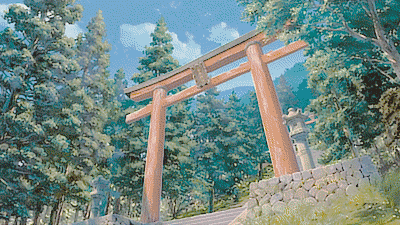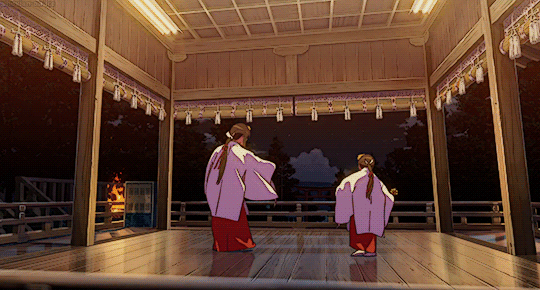WHAT IS SHINTOISM?
What is Shintoism?
In the rest of our blog we will often refer to Shintoism as a religion, as a link between the movie and Japanese culture. Therefore, we will now explain a little bit of what Shinto means.
Shinto is a religion that originates in Japan. It is a pantheistic, naturalistic and animalistic religion, which means that there are a lot of gods or sacred powers, called kami, that can be found in nature, in people or in just pretty much anything that is extraordinary. The worship of ancestors is important as well. Some of the key elements of this religion are that there is no written text like the Bible, nor is there a central dogma on what the religion means. There are some books, the Kojiki and the Nihon Shoki that are considered ‘historical sources’ by Shinto believers. These books were written in the early 8th century AD and are both collections of mythical stories of Japan. The Nihon Shoki is often considered to be more profound than the Kojiki. They both tell the myth of creation of Japan: according to Shinto belief, Japan was created by kami.
Some elements that are distinctive for Shintoism are, as we explained, the existence of kami. These are often translated as gods or deities. We will keep these terms in this blog, because it is the closest we can get to the meaning.
Secondly, there are shrines and festivals. Shrines have some distinct features we will talk about later. Festivals or, in Japanese, matsuri, are some sort of feasts or religious ceremonies and they can have different purposes depending on the shrine and the kami that resides there.
Ideologically, there are some terms that are important in Shintoism. These are primarily: purity or cleanness, impurity, life and death.
Now we will discuss some visual elements by which you can recognize if something is Shinto or not and show some examples from the movie.
Shrines:
There are a couple of decorations or items that are characteristic elements of a Shinto Shrine and they all mean the same thing: 'this is where the shrine begins' or 'from here on it is pure/clean'.
 Shinto shrines often have a very recognizable gate, called a torii, which is something a lot of people will recognize as Japanese, but might not connect to the right religion. This is something that can often be seen in the movie.
Shinto shrines often have a very recognizable gate, called a torii, which is something a lot of people will recognize as Japanese, but might not connect to the right religion. This is something that can often be seen in the movie. There may also be decorations like large cords with knots and tassels, called shimenawa and white paper cut strips called shide.
There may also be decorations like large cords with knots and tassels, called shimenawa and white paper cut strips called shide.Shrine maidens:
A lot of what you could call “shrine servants” are women, and are called shrine maidens or miko. In the movie Yotsuha calls Mitsuha and herself miko. This is one of the reasons why we know that their shrine is Shinto.
Sources:
http://www.onmarkproductions.com/html/shrine-guide-2.shtml
https://en.oxforddictionaries.com/definition/shinto
https://www.britannica.com/topic/Shinto
https://en.oxforddictionaries.com/definition/shinto
https://www.britannica.com/topic/Shinto



Reacties
Een reactie posten